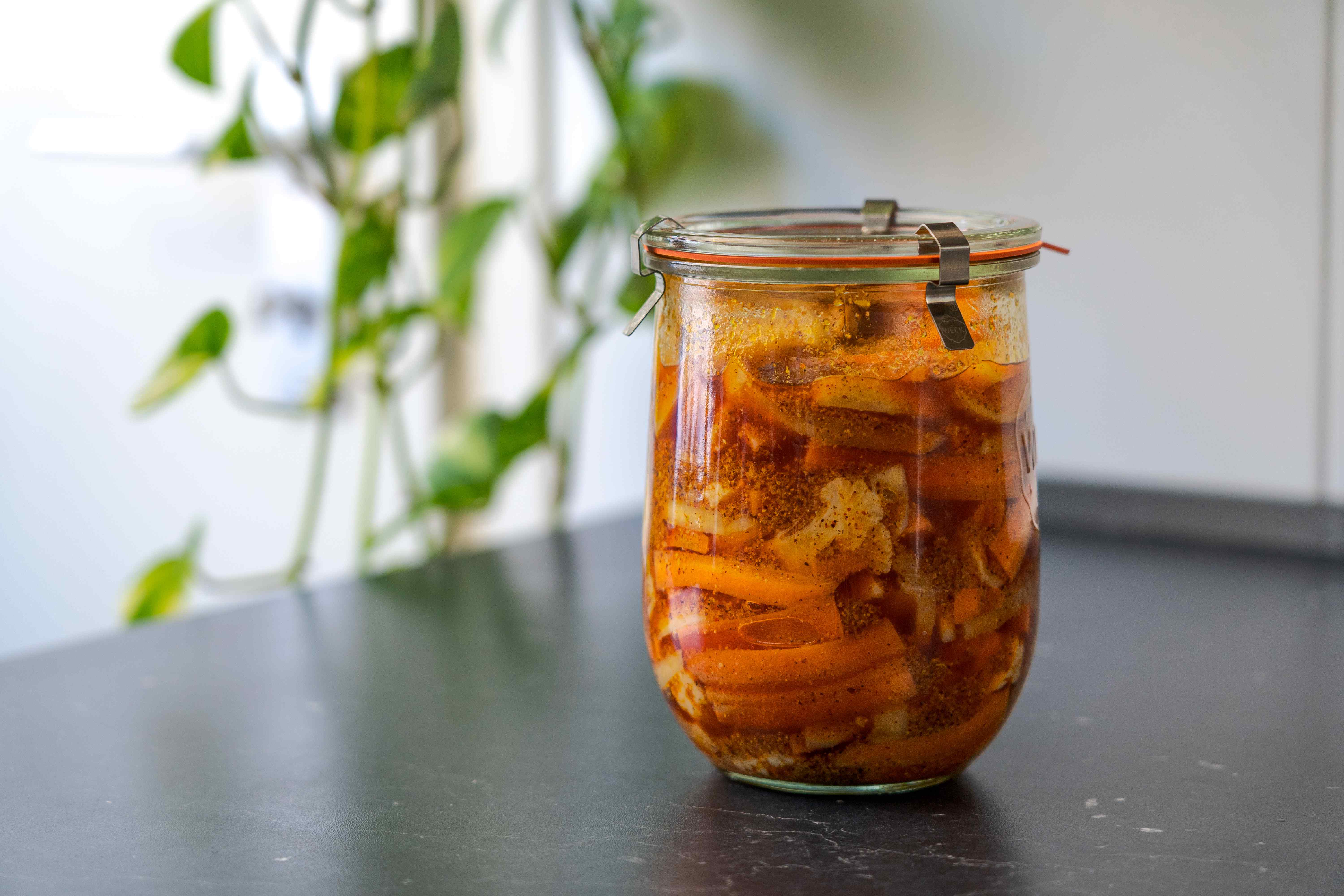Achaar is Indian style pickle that's eaten as an accompaniment to a meal. Usually quite concentrated in flavour, achaars are consumed in small quantities and can transform any boring meal into a celebration for the palate. Achaars are preserved using salt, spices and oil and be kept almost indefinitely. As a result, they are a pantry staple in most Indian homes.
You can make achaar out of almost anything, popular ones include lime, stuffed red chillies, garlic, mix veg, but the list is endless. This is a recipe for one of our favourites - cauliflower, carrot and turnip pickle.
Every Punjabi family has one family member who's known for their Gobi Shalgam Gajar ka Achaar. This person is often the one supplying it to the rest of the family when carrots and turnips are in season. In our family, it is my Mom and this is her recipe.
In India, carrots are a winter vegetable, and winter carrots are red and particularly sweet. We're working with local German produce here, but if you can find Indian carrots, go ahead and use those. This achaar is extremely simple to make but does take a little bit of planning, but don't be discouraged, most of the time involved in making this is waiting time. And when you're done, you will be rewarded with glorious jars of tangy, savoury crunchy vegetables with a mustardy sharpness that you can store in your pantry for months and share with friends or family.
- 500g carrots
- 500g cauliflower
- 500g turnip
- 400ml mustard oil*
- 1.5 tbsp mustard seeds
- 1 tbsp kashmiri chilli powder
- 1 tsp garam masala
- 1 tbsp salt
- 3-4 garlic cloves
- 30g ginger
- 1 small red onion
- 1/2 cup jaggery or sugar
- 1/4 cup table vinegar

Step 1. Chop the vegetables
Peel and chop the carrots into french fry like sticks, cut the cauliflower into florets and peel and cut the turnips into sticks so they are a similar size as the carrots.
Step 2. Blanch the vegetables
Blanch the vegetables in boiling water for 1-2 minutes and then rinse under cold water to stop the cooking process.
Step 3. Sundry the vegetables
Spread the vegetables out on a kitchen towel and lay them to dry out, ideally in the sun, for a few hours. They should be completely dry before you proceed to add anything to them.
Step 4. Prepare spiced oil
Coarsely grind the mustard seeds in a blender or mortar and pestle and set them aside in a bowl. Add all the other dry spices - garam masala, roasted cumin seed powder, Kashmiri chilli powder, and salt, and mix together.
Peel the onion, garlic and ginger and grind them into a fine paste in a blender or mortar and pestle.
Heat the mustard oil in a pan and carefully add in the ginger garlic and onion paste. It will splutter at first so be careful. Let the paste fry in the oil till it's well roasted and you can no longer smell the raw garlic. Then turn off the heat and add all the powdered spices to the oil. Let the oil cool down.
Mix the jaggery and vinegar in a bowl and add them to the spiced oil once it has cooled down.
Step 5. Toss vegetables in the spiced oil
Add all the blanched and dried vegetables to a large bowl. Mix together with the spiced oil till the vegetables are well coated with the oil. Taste test to check for seasoning and add more salt or jaggery if needed.
Step 6. Cure the pickle
Cover and set aside on the counter to cure and mature for 2 days. The pickle will sour and develop some tang.
Step 7. Bottle the pickle
The pickle is now ready for consumption.
Enjoy with paranthas, roti or rice!
*Mustard Oil: If you haven't cooked with mustard oil before, we highly recommend getting some for this recipe. You can find it in almost any Indian store and it costs only a couple of Euros. Since we're preserving the vegetables in oil, it's a key ingredient in this recipe and certainly worth that extra trip to the Indian store. Once you're done with making this achaar and don't know what to do with the rest of the mustard oil, check out our beans aloo, baingan ka bharta or gobi aloo recipes, those are all traditionally cooked in mustard oil.
